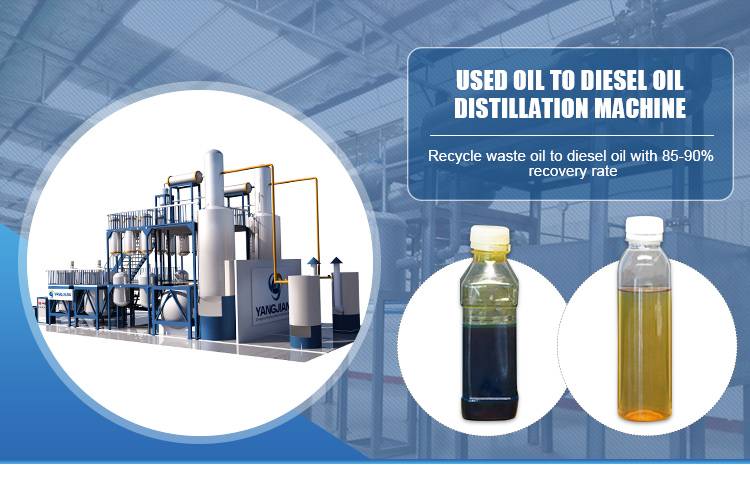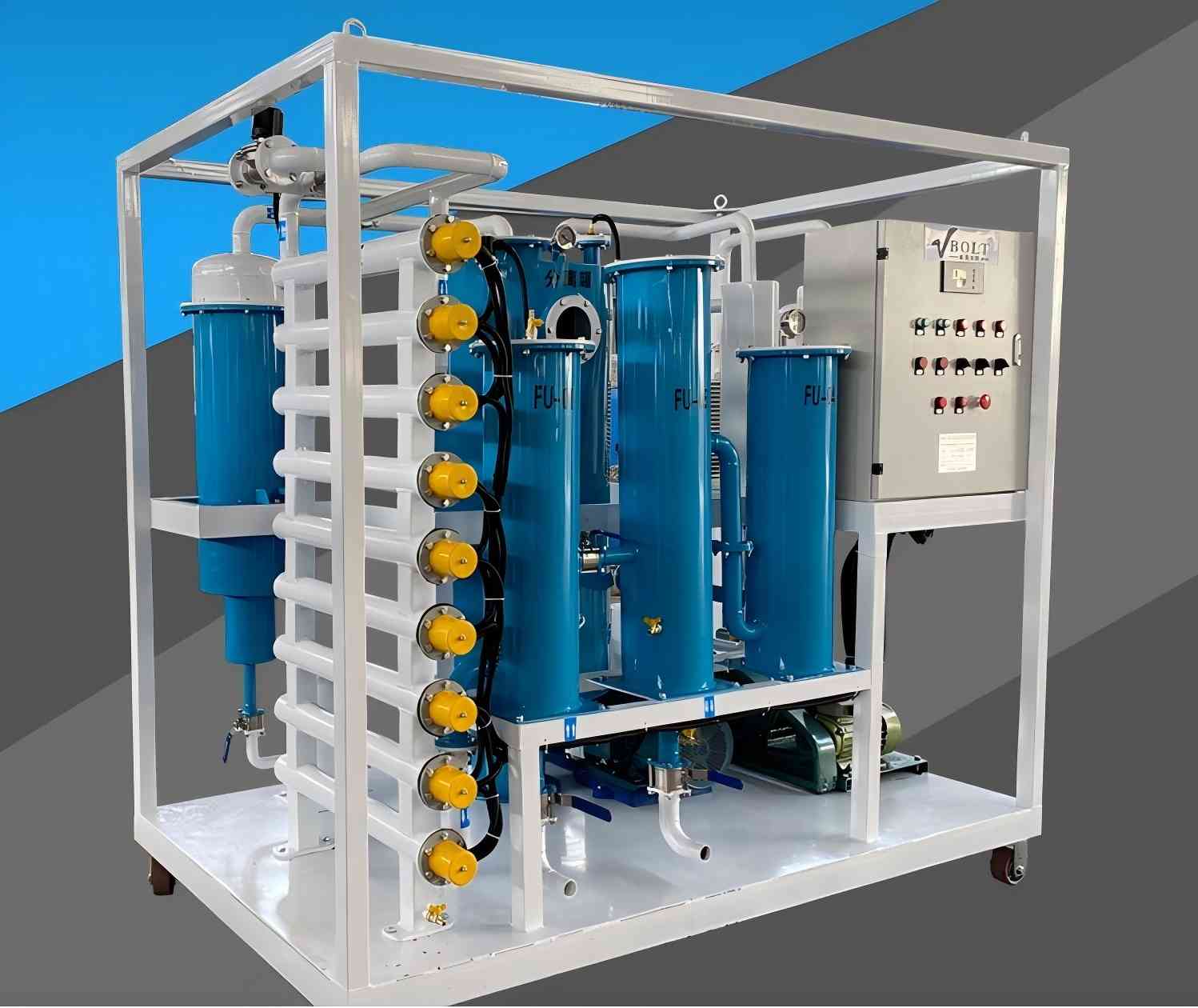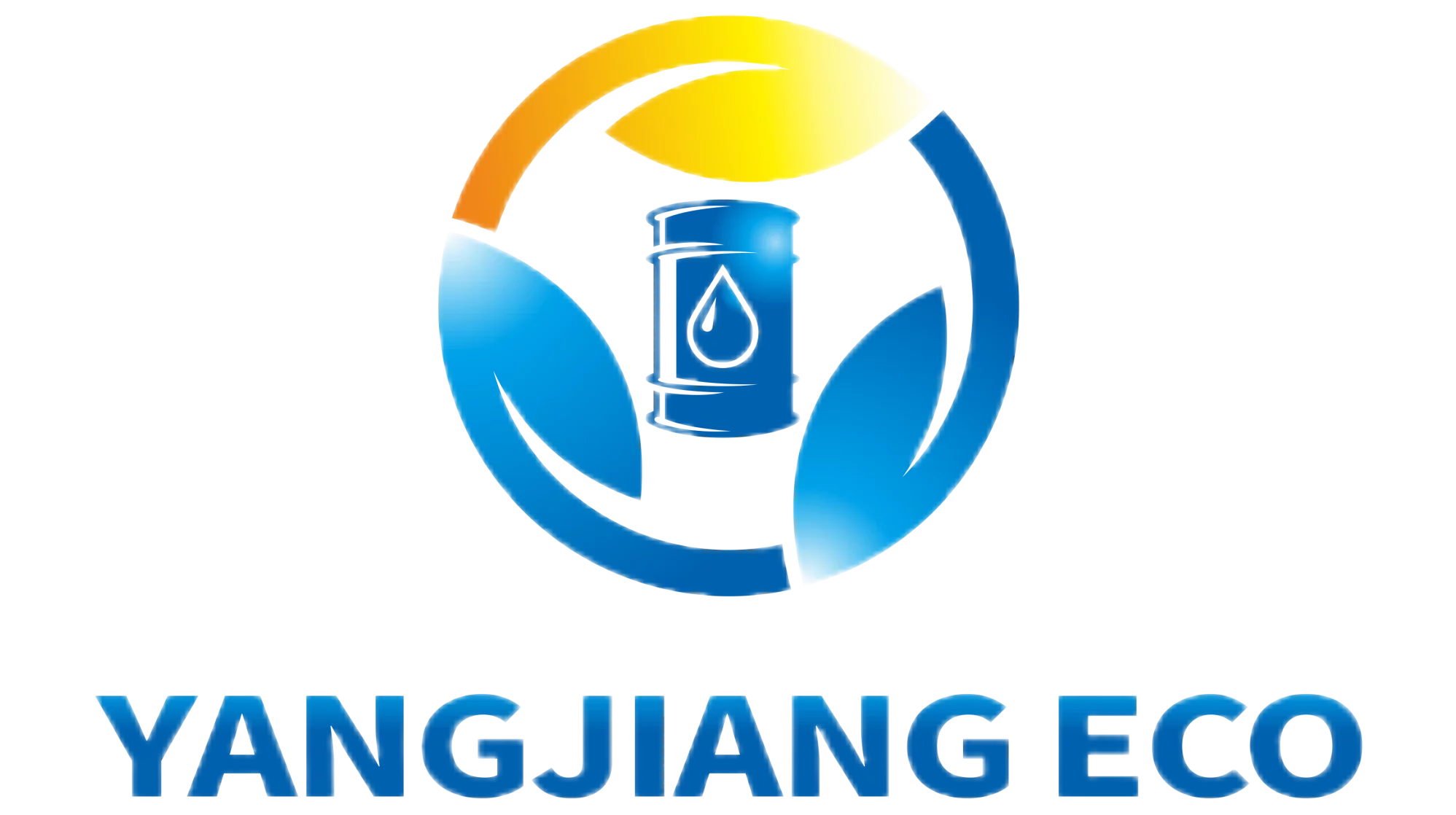The waste oil should not be thrown away because the oil just gets dirty and doesn’t wear out. Waste oil is mainly produced in the process of vehicle maintenance and disassembly as well as the production and processing of industrial enterprises. It is a typical kind of waste oil in waste mineral oil. It contains a variety of toxic and harmful substances, such as heavy metals, benzenes, polycyclic aromatic hydrocarbons, etc., which will cause water and soil pollution, destroy the normal living environment of organisms, and cause biological dysfunction. On the other hand, waste oil has a high recycling value, which can be regenerated into a base oil, fuel oil, and diesel oil through appropriate regeneration technology. The machine that recycles waste oil and reprocesses it is called an engine oil recovery machine.

To treat the waste and then get the clean lubricating oil, there are two ways to achieve this goal. One method is to purify the waste oil, the other is to recycle the waste oil. The machine which is used to purify the used oil is called an oil purification machine. While the equipment which is used to recycle the waste oil is called an oil recycling machine. In today’s article, we will focus on transformer oil purification machines and engine oil recycling machines. Today we are mainly focused on the difference between the transformer oil purification machine and engine oil recycling machine.
What is a Transformer Oil Purifier?
A transformer oil purifier is mainly used to purify waste transformer oil. Waste oil is purified and reused through the use of transformer oil purifiers. The role of transformer oil is:
- Increase the insulation strength of each component in the transformer. The transformer oil has good insulation strength and fluidity. It can fill all parts of the transformer and any space, expel the air, avoid the contact between the parts and the air, and affect the insulation strength, so that the winding and the winding, the winding and the iron core In between, good insulation is maintained between the winding and the tank shell.
- Cool the core and windings of the transformer. During the operation of the transformer, the oil close to the winding and the iron core increases in temperature expands in volume, decreases in specific gravity, and rises, and then enters the bottom of the transformer tank after being cooled by the cooling device, thereby forming an oil circulation. During the cycle, the heat is dissipated to the cooling device.
- It can keep the original chemical and physical properties of the insulator (such as wood, etc.), and make the metal (such as steel, etc.) play an anti-corrosion effect.

What is an Engine oil recycling machine?
The engine oil recovery machine is to recover the waste oil and go through a series of processes such as pickling and alkali washing so that the oil can reach the standard for reuse.
Transformer oil purifier and waste oil recovery machine have different functions
do you know? Although the waste oil is reused, the waste oil recovery machine and the transformer oil purification machine are completely different.
First of all, transformer oil and motor oil belong to different types of oil and have different uses. Transformer oil is only suitable for transformers, while engine oil has a wider range of applications, such as lubricating oil for engines and machines, etc.
The second difference is that the way to process waste oil. The transformer oil purification machine for the waste transformer insulation oil treatment method includes three steps. That is, the first level of oil treatment is the use of a pressure oil filter to insulation oil particles and impurities in the pressure filtration. The second oil treatment is to use the first vacuum oil filter for vacuum degassing and dehydration of the insulating oil treated by the first vacuum oil filter. The third-stage oil treatment is a three-stage insulating oil treatment method that is applied by the second vacuum oil filter through the first and the second. The oil is treated independently by grading. When the technical index of the oil reaches the specified value, the oil is injected. The machine makes full and reasonable use of the advantages of pressure filtration and vacuum filtration, especially suitable for the treatment of insulation oil in the on-site installation of 750KW and above large capacity power transformers and reactors.
While the engine oil recycling machine recycles the used oil with a different method
- Water removal: after the waste oil is collected to the oil sump for water removal, it is placed in the oil refining pot, heated to 70-80 ℃ and then stopped heating, let it stand for about 24 hours, drain the surface water, and then slowly heated to 120 ℃ (when the oil temperature is close to 100 ℃, it should be slowly heated to prevent the oil from boiling and overflowing), to evaporate the water. After about two hours, the oil does not turn and black oil gas emerges from the soil surface. Yes.
- Acid pickling: when the oil is cooled to normal temperature, slowly add sulfuric acid under stirring (the concentration is about 92-98%). The acid consumption is generally 5-7% of the oil consumption (determined by the degree of oil contamination). After adding the acid, continue stirring for half an hour, and then stand for about 12 hours to drain the acid residue.
- Alkali washing: raise the temperature of the engine oil after pickling to 80 ℃, add soda ash (Na2CO3) under the agitation, mix it well, let it stand for 1 hour, and then use the test paper to check it as neutral, and then stand for more than 4 hours to drain the alkali slag.
- Adsorption of activated clay: raise the temperature of the oil to 120-140 ℃, add activated clay under constant temperature and agitation (the dosage is about 3.5% of the oil quantity). After adding activated clay, continue to stir for half an hour, and stand at constant temperature for one night under 110-120 ℃, and filter while hot the next day.
- Filtration: oil filter can be used for filtration, and qualified oil can be obtained after filtration. If there is no oil filter, the bag hanging method can also be used. The above is the general operation process of oil purification, but it should be determined according to the actual situation. If there is little impurity water, the first step can be omitted; if the color of the oil is normal after acid and alkali treatment, it is unnecessary to use active clay to decolorize and absorb.
Therefore, do not confuse waste oil recovery machines with transformer oil purifiers.


